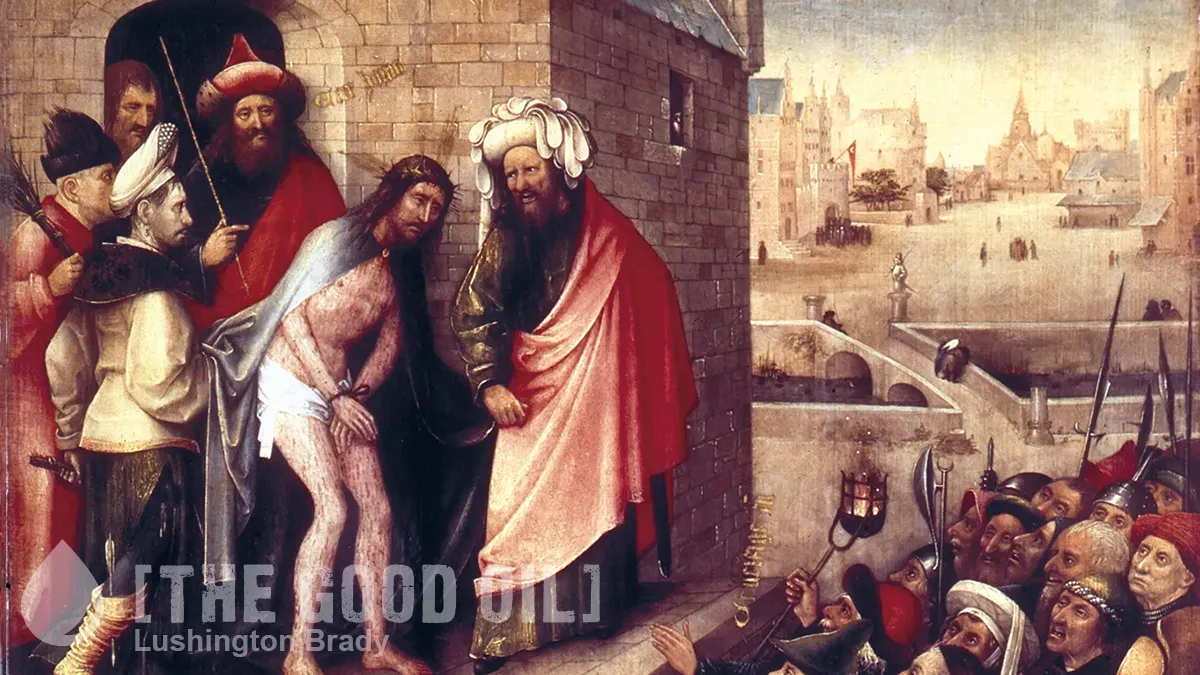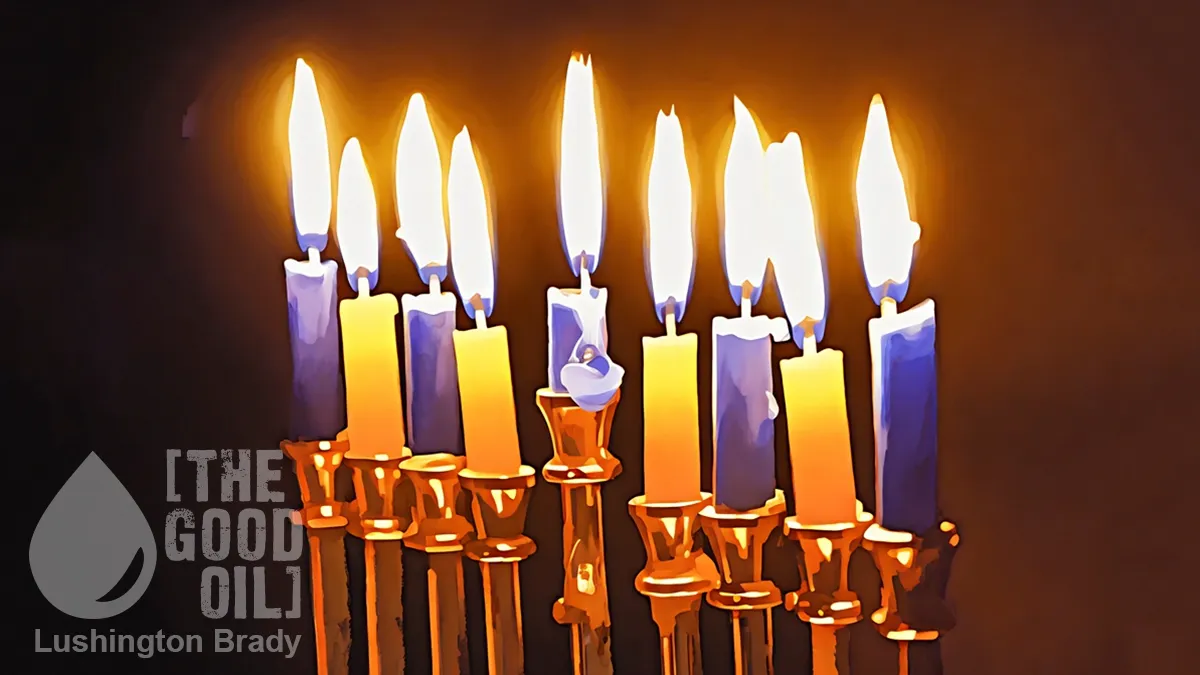You can purchase Nieuw Zeeland An English-Speaking Polynesian Country With A Dutch Name: A Humorous History of New Zealand by Geoffrey Corfield from Amazon today.

Another religion. Another campaign.
One of those sent to the Chatham Islands in 1866 is Te Kooti Rikirangi (otherwise known as Te Kooti, pronounced Kotty), a Poverty Bay Maori who fought for the government against the Hauhau, but was then suspected of being a Hauhau spy and arrested although “there does not appear to be much truth in the charge”.
While in the Chatham Islands Te Kooti has a vision from the archangel Michael to form a religion called “Ringatu” (the uplifted hand), to take over from the Hauhau and lead the Maori to the promised land as Moses had lead the Israelites. And he does. He leads them from the Chatham Islands to the North Island of New Zealand.
Te Kooti and a congregation of 298 Ringatu church members (163 men, 64 women, 71 children), take over a ship on the Chatham Islands and sail away on a church outing to just south of Poverty Bay (10 July 1868, one day after the New Zealand government grants the Maori four permanent representatives to the New Zealand General Assembly). They have escaped.
Thus begins a four year campaign to catch Te Kooti that involves a chase around some 20, 000 square miles of the North Island resembling the route of a long distance cycling race; ending up with Te Kooti not being caught after all, but retiring to Te Kuiti (to become Te Kooti of Te Kuiti), and being pardoned in 1883.
Along the way Te Kooti tries to persuade other disciples to join his religion (he recruits Kereopa “The Eye-Eater”, and Hakaraia “The Son of Satan”); while at the same time other Maori join the government forces and eagerly work to catch him (most notably the Maori of the East Cape, Hawke’s Bay, Rotorua and Wanganui).
Te Kooti however evades them all by adopting guerrilla tactics, (strike quickly and retreat even quicker); sticking to the wild, inaccessible parts of the interior where he builds many hideouts; and popping up where and when least expected (the whole of the central North Island feared where he might strike next).
The total number of Te Kooti’s followers was probably not more than 1,500 (but not all at the same time), but by mid-1870, having been on the run for two years, it was reported that he was down to just 21 men and five women.
The government forces are never more than 1,000 at any one time, and are made up of what British soldiers remained, New Zealand Militia, New Zealand Volunteer Units, Forest Ranger Volunteers, New Zealand Armed Constabulary, and Loyal Maori.
New Zealand Militia 1845-1867 – All men 18-65 trained for 28 days/year and available to serve within 25 miles of their local police station.

The BFD. Illustration by Inkblot
New Zealand Volunteer Units 1845-1867 – Serve for a three-month term, exempt from militia duty, more pay than militia.
Forest Ranger Volunteers 1863-1867 – Formed for counter-guerrilla work in the bush, paid three times the militia rate, in total comprised 365 men.
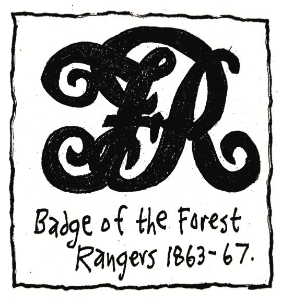
The BFD. Illustration by Inkblot
New Zealand Armed Constabulary – Formed in 1867 as a police force to replace the militia/volunteers, but acted more like an army. Included two Maori units. In the 1860-1870’s many constabulary “went native” and adopted Maori shawls worn as kilts instead of trousers (it is not known what was worn underneath the kilts).
By mid-1870 the Loyal Maori and the Maori Constabulary are leading the chase to catch Te Kooti, with the government forces used to take up positions trying to contain him; because “the Maori moved without noise”, whereas the New Zealanders made too much noise with “the jingling of their pannikins and their oaths”.
In the end, Te Kooti evades capture by making it all the way from Lake Waikaremoana to safety at Te Kuiti by avoiding all the guarded mountain passes and patrols meant to catch him and is never caught.
The route of the chase of Te Kooti is best shown on a map. Of course, Te Kooti did not travel in the straight lines as shown, they represent only the route from point to point. There were many incidents during the four years of The Te Kooti Campaign. These are some of the highlights:
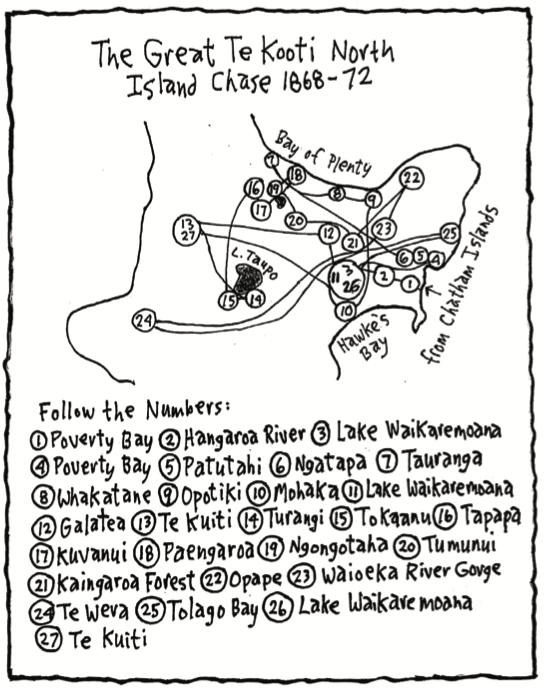
The BFD. Illustration by Inkblot
1868- Landing south of Poverty Bay, Te Kooti heads inland to the Hangaroa River and Lake Waikaremoana, skirmishing several times with government forces from Poverty Bay and Wairoa. On 10 November he attacks and burns Poverty Bay killing 33 settlers and 37 Maori. Te Kooti’s fortress at Ngatapa is attacked and 136 Ringatu killed (3 December-4 January 1869).
1869 – Te Kooti attacks Tauranga, Whakatane and Opotiki, Bay of Plenty; Mohaka, Hawke’s Bay; and Galatea, Urewera. Rewards are offered for him dead or alive. Te Kooti seeks the assistance of the Maori King at Te Kuiti, but is rejected. He attacks Turangi, Lake Taupo; and rejects peace terms (“let your trying to kill me cease, that is all”).
1870 – Te Kooti is confronted in the Lake Rotorua and Waioeka River areas (near Opotiki); and raids Tolago Bay, East Cape.
1871 – Te Kooti’s fortress at Lake Waikaremoana is destroyed by the government. Te Kooti leaves behind a note: ”To all the government…from your enemy”. Kereopa is caught and hanged at Napier.
June 1872 – Te Kooti escapes capture and turns up at Te Kuiti where it had been agreed in 1869 he could safely reside. He retires from war, later moves to Ohiwa near Whakatane, and dies in 1893.
As if having one outlaw on the loose is not enough, another one pops up too. In the same year as Te Kooti lands in the northeast of the country, there’s another Hauhau uprising in Taranaki on the west coast. Their leader is Titokowaru.
Titikowaru’s Hauhau attack Patea, and are attacked, pursued and scattered by the government forces at Ngutu-o-te-manu (their fortress inland from Kapuni, south Taranaki, August 1868); near Waverley (1868); the Patea River (March 1869, Titikowaru writes to the government: “Away with you from our country to your own country in the midst of the ocean”); Whakamaru (north of Lake Taupo); and Ngaere, Taranaki.
When Titokowaru retreats north to Waitara the pursuit is called off (1869, support for the Hauhau has dwindled). Titokowaru surrenders and is pardoned (1872), but then re-arrested in 1881 and put on trial.
At his trial Titikowaru pleads guilty, but when told that he has to
plead not guilty, he gets up to leave the courtroom but is told he has to stay in case he might be guilty. “We have written in the big book that you are not guilty”, says the judge.”That is untrue”, replies Tito- kowaru, “I said I was guilty. I always thought the Pakehas were accursed fools”. He is jailed until he can find bail and then ordered to keep the peace for 12 months.
The British-Maori Wars end in 1872. They are estimated to have cost the lives of 1,000 British, New Zealanders and Maori fighting for the government, and 2,000 Maori fighting against it. They have also contributed to making New Zealand history complicated.
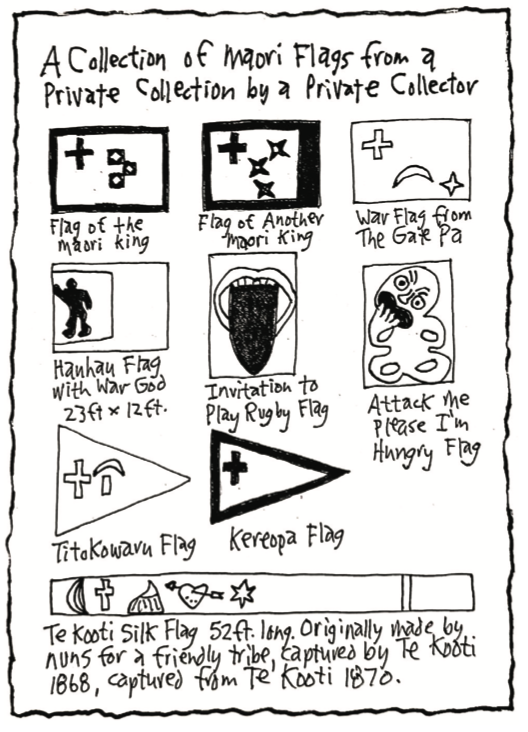
The BFD. Illustration by Inkblot
You can purchase Nieuw Zeeland An English-Speaking Polynesian Country With A Dutch Name: A Humorous History of New Zealand from Amazon today.

If you enjoyed this BFD article please consider sharing it with your friends.


